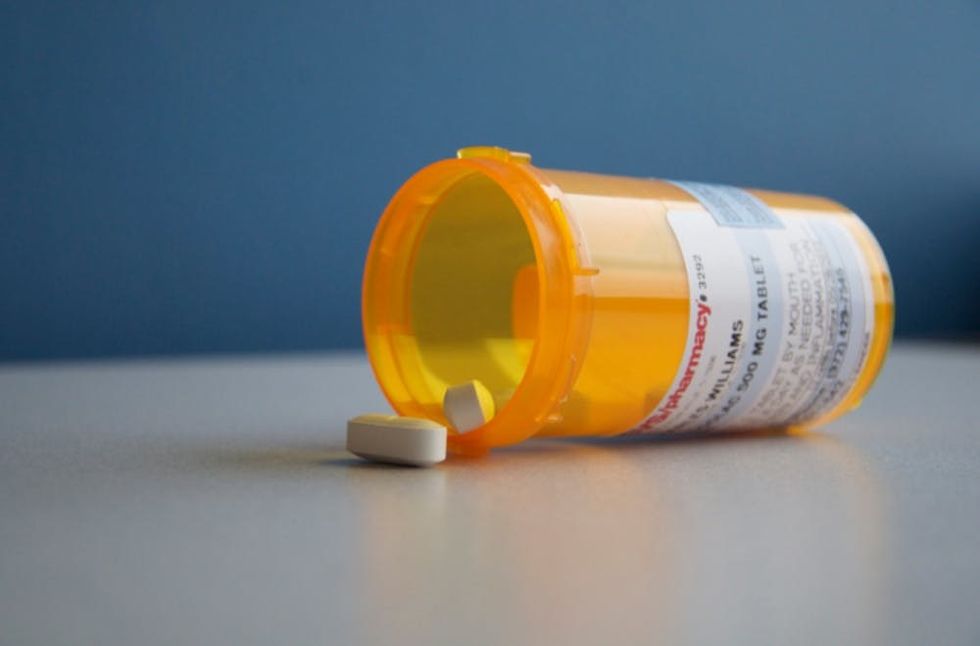Amid an Opioid Crisis, Details of Carrie Fisher’s Death Remind Us How Women Are Vulnerable

Fans the world over were devastated when Star Wars actress Carrie Fisher died suddenly in December 2016. An autopsy report, made public on Monday, revealed that the 60-year-old actress had a number of drugs in her system at the time she died, including cocaine, ecstasy, and opiates. It’s unclear whether these drugs were a cause of Fisher’s death, but the new revelations do remind us that women fall prey to addiction in addition to men, and that women may even face additional or unique risks.
The star was open about her long-term struggle with addiction that started before she was even cast in Star Wars as Princess Leia, but her death last year happened to come at a time when opioid use in the US had reached epidemic proportions. Opioid abuse caused 33,091 deaths in 2015, according to the Centers for Disease Control and Prevention (CDC). Though the opioid epidemic impacts people of all demographics, women make up a fast-growing proportion of people who die due to opioid problems.

The opioid epidemic in the US has gained national attention in recent years as the problem has worsened, claiming thousands of lives each year. Prescription opioids are painkillers, such as Vicodin and OxyContin, prescribed by a doctor to a pain patient. While opioids are often very effective at treating severe pain, they are also highly addictive.
Initially, doctors were not aware of how addictive opioids can be, and thus prescribed them generously to their patients, many of whom became dependent on the drug. When patients are no longer able to get their hands on prescription drugs, many of them turn to heroin, also an opioid. According to Vox, people who are already addicted to prescription opioids are 40 times more like to develop a heroin addiction compared to people who do not have an addiction to prescription pain medication.
Like Fisher, many women struggle with opioid abuse and addiction. According to the CDC, nearly 48,000 women in the US died from prescription opioid painkillers between 1999 and 2010. Since 1999, the number of women who have died because of prescription opioid problems has increased by an astonishing 400 percent. The problem has also become significantly worse for men, who have seen a 265 percent increase in prescription opioid-related deaths since 1999.
Men are still more likely than women to have an opioid addiction than women, but both the CDC and the HHS have found that women are catching up at an alarming rate. The US Department of Health and Human Services (HHS) published a report in 2016 which further states that heroin use among women increased by 100 percent between 2002 and 2013; for men, heroin use increased 50 percent.
There are some scary differences between the way that addiction manifests in women, versus men. The HHS compiled CDC data that reveals women turn to heroin more often and at a faster rate than men. Additionally, “Women are more likely to experience chronic pain and use prescription opioid pain medications for longer periods and in higher doses than men,” the HHS report states.
Women also were shown to become dependent on prescription opioids much faster than men, and had more opioid cravings.

Though the number of men who die each year from prescription opioid problems is a serious issue, the CDC says that the growing problem of prescription opioid-related deaths for women is “under-recognized,” and the HHS says little is known about how opioids impact men and women differently. What is known, however, is that women use opioids differently than men do.
The CDC recommends that prescribing doctors should bear this growing crisis in mind when prescribing opiates to women as well as men. Doctors should also screen patients for substance use problems, and monitor their patients’ drug use with medication monitoring programs.
Because more people are dying than ever before due to opioid-related issues and overdoses, many experts also agree that the medical community needs to explore other options for pain management ASAP.
Recent studies have shown that medical marijuana seems to curb opioid abuse. According to a report published earlier this year in the journal Drug and Alcohol Dependence, states with legalized medical marijuana saw an average 23 percent drop in hospital visits for prescription opioid abuse and addiction between 1997 and 2014. The average drop in opioid-related overdoses was only 13 percent in all states during this same time period.
Medical marijuana is one possible method for treating pain that so far does not seem to lead to addiction, and certainly doesn’t lead to overdose the way opioids can (there has never been a reported incident of marijuana overdose, according to Vox).
The Brookings Institute also recommends that doctors educate their patients on the specific nature and source of their pain, and discuss all treatment options so that patients are open to more than just prescription painkillers. The Institute also recommends generally prescribing fewer opioids as key ways to address the current crisis.
As Fisher’s toxicology report reveals a mixture of drugs including opiates, the nation is struggling to come to grips with the number of addicted patients and deadly overdoses of opioids. More research is needed as to how and why women are becoming a growing part of this crisis, but it’s clear that many institutions are making it a priority.
What are your thoughts on the opioid epidemic? Tell us on Twitter @BritandCo.
(Photos via Getty + Charles Williams/Flickr)




















